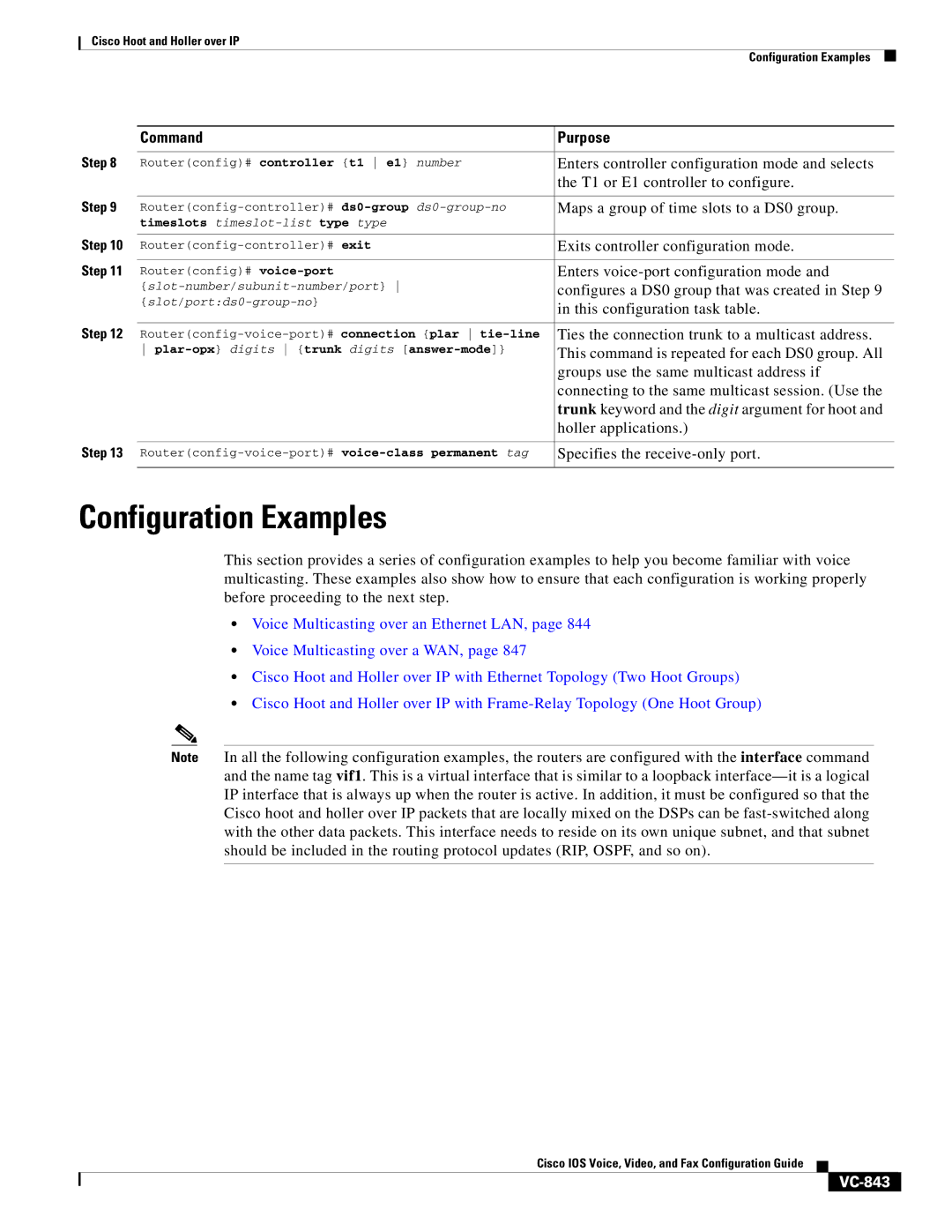
Cisco Hoot and Holler over IP
Configuration Examples
| Command | Purpose |
Step 8 |
|
|
Router(config)# controller {t1 e1} number | Enters controller configuration mode and selects | |
|
| the T1 or E1 controller to configure. |
Step 9 |
|
|
Maps a group of time slots to a DS0 group. | ||
| timeslots |
|
Step 10 |
|
|
Exits controller configuration mode. | ||
Step 11 |
|
|
Router(config)# | Enters | |
| configures a DS0 group that was created in Step 9 | |
| in this configuration task table. | |
|
| |
Step 12 |
|
|
Ties the connection trunk to a multicast address. | ||
| This command is repeated for each DS0 group. All | |
|
| groups use the same multicast address if |
|
| connecting to the same multicast session. (Use the |
|
| trunk keyword and the digit argument for hoot and |
|
| holler applications.) |
Step 13 |
|
|
Specifies the | ||
|
|
|
Configuration Examples
This section provides a series of configuration examples to help you become familiar with voice multicasting. These examples also show how to ensure that each configuration is working properly before proceeding to the next step.
•Voice Multicasting over an Ethernet LAN, page 844
•Voice Multicasting over a WAN, page 847
•Cisco Hoot and Holler over IP with Ethernet Topology (Two Hoot Groups)
•Cisco Hoot and Holler over IP with
Note In all the following configuration examples, the routers are configured with the interface command and the name tag vif1. This is a virtual interface that is similar to a loopback
Cisco IOS Voice, Video, and Fax Configuration Guide
